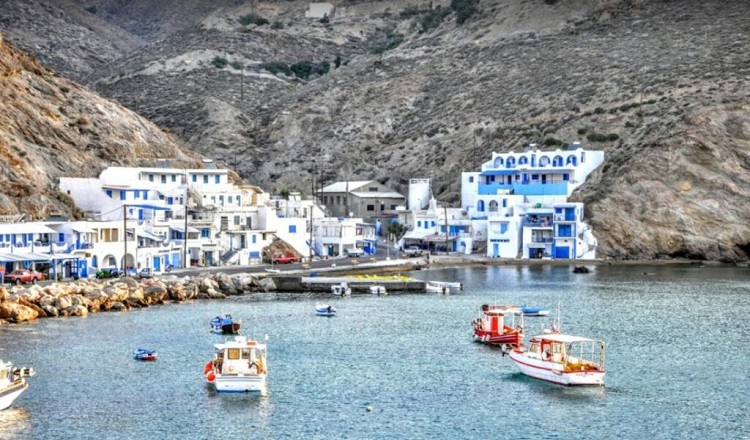
Anafi
Anafi is characterized as an island of exceptional natural beauty. The Chora of Anafi is built in an amphitheatrical manner on a hill and features the characteristic all-white houses. The narrow cobblestone streets of Chora, constructed from stone, run through the settlement, all of which are integrated into the ruins of the Venetian Castle.
History of Anafi
In mythology, Anafi is associated with the return of the Argonauts from Colchis. When the Argonauts were trying to escape sudden darkness and intense storms in the Cretan Sea, they sought the help of the god Apollo. Apollo cast a radiant beam of light that revealed a nearby island where the Argonauts hurried to anchor. Due to this salvific appearance, the island was named Anafi, which means "the island that is illuminated." They built a sanctuary dedicated to the god Apollo Aeglitis (the Radiant).
During the Middle Ages, the island was subordinated to the Duchy of Naxos and governed by various Venetian rulers.
Anafi actively participated in the Greek Revolution of 1821 and was incorporated into the Greek state in 1832. During the reign of King Otto, the Anafiotes had a reputation as the country's best builders. By order of the king, several inhabitants moved from the island to Athens to build the royal palaces. They settled at the foot of the Acropolis and created their own neighborhood called "Anafiotika," which is a miniature representation of their island and now stands as a remarkable architectural gem of Athens.
Beaches in Anafi
- On the southern side of Anafi, the beaches are sandy, sheltered from the wind, and more popular. Starting from the Port, we encounter the beaches in the following order: Klisidi, Katsouni, Flamouro, Katelimatsa (Ancient Port), Mikros and Megalos Roukounas, Megas Potamos, Agioi Anargyroi, and Monastiri. These beaches are accessible on foot, by boat, or by bus.
- On the other hand, on the northern side of the island, the beaches are rocky and quieter. There, you will find peace and tranquility as these beaches are not as well-known and usually less crowded.
- Furthermore, Anafi is ideal for fishing enthusiasts, both underwater and from the shore, as its seas boast a wide variety of fish in crystal-clear waters.
Sights in Anafi
- In the country of Anafi, you will find many interesting points of interest, such as the cobblestone alleys and the old windmills. Additionally, there are the ruins of the Venetian Castle in Chora, which served as an observatory towards the Cretan Sea. In the southwest of the island, you can find the ruins of the "Pyrgi" Castle, which also functioned as an observatory.
- Anafi also has an archaeological collection where statues from the Ancient City of Kasteli are exhibited. Furthermore, you can visit the ruins of the Temple of Aeglitis Apollo-Anafaion, the Monastery of Panagia Kalamiotissa on Mount Kalamos, the Monastery of Zoodochos Pigi, the cave "Drakontospilo" with its colorful stalactites and stalagmites, as well as an unexplored cave in the location "Prasa" with stalactites and stalagmites.
- Other notable places in Anafi include the ancient port of "Katelimatsa," a large part of which has sunk into the sea, the Ancient City of Anafi located on the hill of "Kasteli," the chapel of Panagia tou Dokariou in the location "Kasteli," and the Vigla hill, the highest point of Anafi. At the summit of the hill, the Phryctoriae were located, one of the main communication and signaling centers in the Mediterranean during the period 900-1000 AD.
